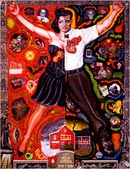International Crisis Group:
Eight actual or potential conflict situations around the world deteriorated in August 2006, according to the new issue of CrisisWatch,* released today. Sri Lanka saw full-scale military clashes in eastern and northern regions kill hundreds and displace some 200,000. Sudan’s Darfur region continued its slide, with the government launching a new offensive and the World Food Programme estimating that 500,000 people are now cut off from emergency food aid. After security forces killed a key Balochistan leader, Pakistan experienced violent protests and province-wide strikes. International tensions over nuclear programs in both Iran and North Korea worsened. The situation also deteriorated in Burundi, Kuril Islands/Northern Territories (Russia/Japan) and the Taiwan Strait.
Four conflict situations showed improvement in August 2006. Following 34 days of war between Israel and Hizbollah, a UN-brokered ceasefire commenced on 14 August. In Uganda, the government and rebel Lord’s Resistance Army signed a truce, though significant barriers to peace remain. The situation also improved in Angola and Togo.
For September 2006, CrisisWatch identifies Democratic Republic of Congo, Lebanon, Pakistan, Somalia and Sudan as Conflict Risk Alerts, or situations at particular risk of new or significantly escalated conflict in the coming month. A Conflict Resolution Opportunity has been identified for Uganda.
Here.








